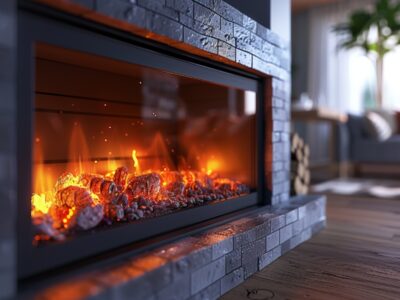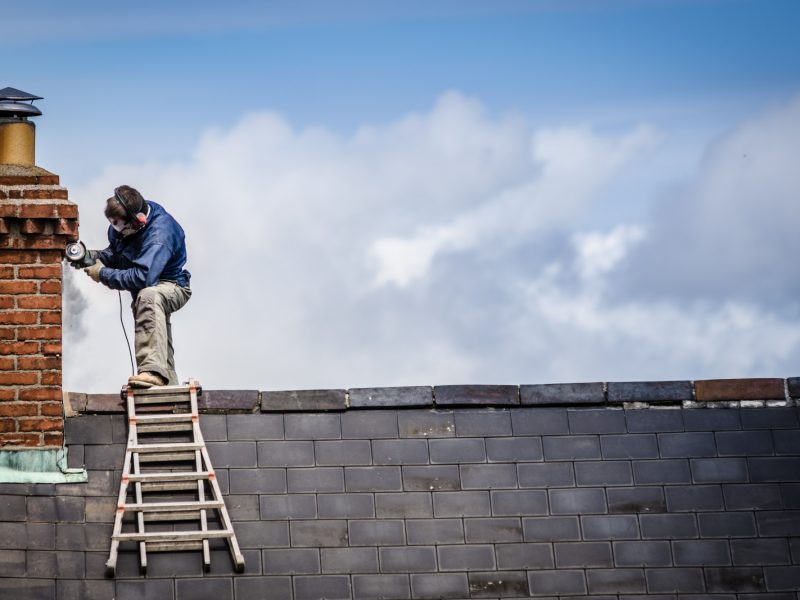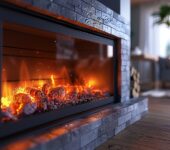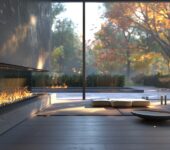Table of Contents
Did you know that a poorly ventilated chimney can cause a chimney fire?
When most people think about a chimney, they picture a tall structure on the roof of a house with smoke billowing out. But what is a chimney, really? And how does a chimney work?
In this blog post, we will explain the basics of how a chimney works. We will cover the different parts of a chimney, how it functions, and some common problems that can occur.
If you are considering installing a chimney or have questions about how your current chimney works, read on!
Home Chimney 101
The chimney is one of the most essential parts of a home. It’s responsible for drawing hot air and smoke up and out of the house, and it also helps to regulate the airflow within the home. But how does a chimney work?
The chimney works by utilizing the principle of convection. Hot air rises, while cold air sinks.
So, when you light a fire in the fireplace, the fire’s hot air rises through the chimney. This creates a draft that pulls more cold air into the fireplace. As a result, hot air continuously rises from the chimney while cold air gets drawn into the fireplace. This convection current is what keeps a fire burning and prevents smoke from escaping into the home.
Chimneys are an essential part of any home, and understanding how they work can help you to troubleshoot any problems that you may experience with your chimney. If you’re having trouble with your chimney, remember to contact a professional for help.
Chimney Key Components
Several key components work together to make a chimney function properly. First, there is the firebox. This area contains and lights the fire. Usually, bricks or stone make up the firebox, which has a metal grate at the bottom to circulate air.
Let’s take a look at some other components of the chimney anatomy!
Cap
A chimney cap is a covering placed over the top of a chimney. Its purpose is to keep water, animals, and debris from entering the chimney. Chimney caps also help to prevent sparks from escaping and igniting a fire.
Most chimney caps are made of metal and have a screen or mesh that covers the opening. The type of chimney cap you need depends on the type of chimney you have.
Crown
The crown is the concrete or mortar around the top of the chimney. Its purpose is to seal the chimney and prevent water from leaking in.
Flue
The flue is the part of the chimney that carries the smoke and hot air up and out of the house. It is usually made of metal or clay and is usually lined with bricks or mortar.
Smoke Chamber
The smoke chamber is the area just above the firebox where the hot air and smoke from the fire collect before entering the flue. This area must be well-ventilated so that the smoke can rise from the chimney easily.
Damper
The damper is a metal plate located just above the firebox. It can be opened and closed to allow air to flow into the fireplace and regulate the draft.
Liner
A chimney liner is a material that lines the inside of the flue. It is usually made of metal or clay and helps to keep the flue clean and free of debris.
Flashing
Flashing is the metal that seals the area where the chimney meets the roof. It helps to prevent water from leaking into the home.
Different Types of Chimneys
A chimney is a structure that provides ventilation for hot flue gases or smoke from a boiler, stove, furnace, or fireplace to the outside atmosphere.
There are many different types of chimneys, including masonry chimneys, prefabricated metal chimneys, and factory-built fireplaces.
Masonry chimneys, made of brick or stone, are the most common type. Stainless steel or other corrosion-resistant metals usually make up the less common prefabricated metal chimneys.
Metal, glass, or ceramic usually make up the least common type, factory-built fireplaces. Each type of chimney has its benefits and drawbacks, so it’s important to choose the right one for your home.
What to Know About Chimney Installation
Only experienced professionals should attempt the complex process of chimney installation. There are many factors to consider, including:
- The type of chimney
- The location of the house
- The height of the roof
In addition, you must properly connect the chimney to the rest of the house for it to function correctly. The installation process can be time-consuming and expensive, but it is essential for ensuring the safety of your home.
A well-installed chimney will provide years of trouble-free operation, making it a wise investment for any homeowner.
If you’re planning to install a new chimney, you’ll need to prepare for the installation.
First, dismantle the old chimney with the help of a professional who can do it safely.
After removing the old chimney, prepare the installation area by clearing debris and leveling the ground.
Then, proceed with the new chimney’s installation, which a professional should also handle to ensure correct installation and prevent future problems.
How Does a Chimney Work: Get Yours Today
So how does a chimney work? Now you know the answer!
If you’re looking for a way to improve the ventilation in your home, a chimney is a great option. Experienced professionals can install chimneys in a variety of sizes and styles to suit any home.
Looking for a fireplace expert in the Philadelphia area? Contact us today!
Latest Articles

Fireplace Safety Screen Vs. Safety Glass
Table of Contents1 What Is A Fireplace Safety Screen?2 What Is Safety Glass?3 What Are The Differences Between A Fireplace Safety Screen And Safety Glass?4

How Much Does It Cost To Convert Two Garage Doors To One?
Table of Contents1 What Is Garage Door Conversion?2 Why Would Someone Want to Convert Two Garage Doors to One?3 What Are The Factors That Affect

Garage Door Glass Inserts: Customize Your Garage Door Appearance
Table of Contents1 What Are Garage Door Glass Inserts?2 What Are the Benefits of Garage Door Glass Inserts?3 What Types of Glass Inserts Are Available?4




















































































